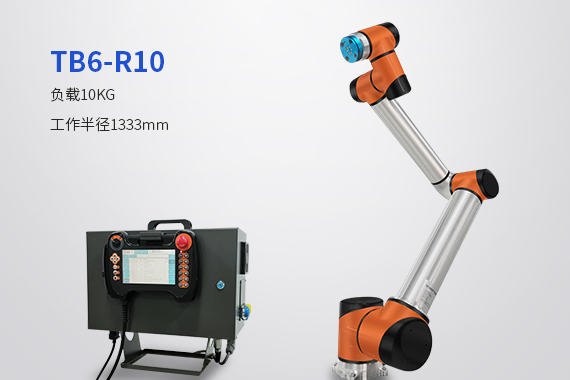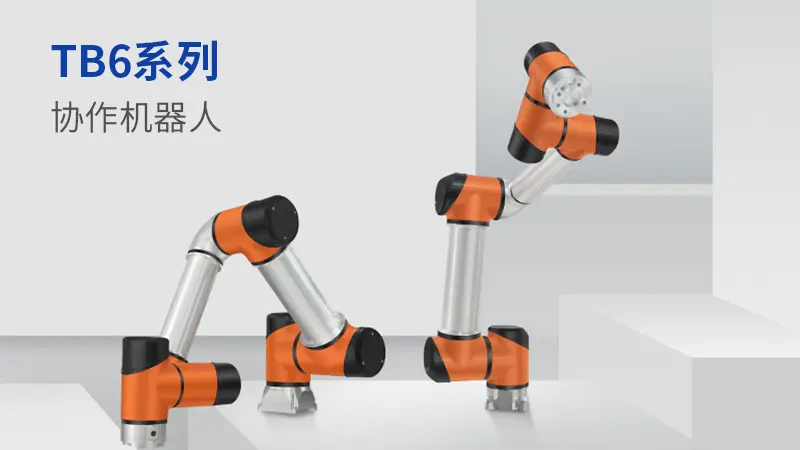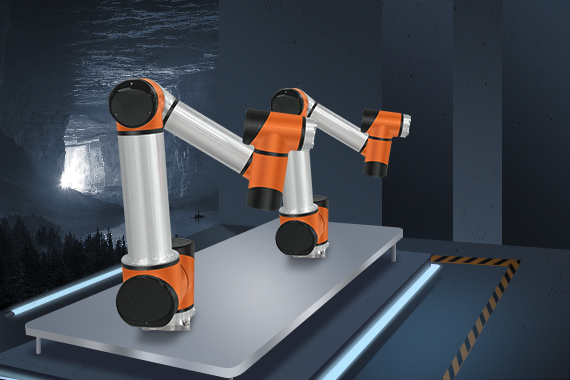Co-robots promote the acceleration of manufacturing intelligence
Date:2021-01-26
With the further deepening of the transformation and upgrading of my country's manufacturing industry, more and more companies have begun to move towards intelligence, upgrade production equipment automation, and gradually replace manpower with machines to help companies improve their manufacturing models. In the process of human-machine collaboration, robots are an important driving force for the development of automation to enter a new stage, and they are also the key to achieving intelligent upgrades for enterprises.
1. What is a co-robot
The future smart factory is created by the harmonious coexistence of humans and machines, which requires robots to cooperate with humans and complete different tasks with humans. This includes not only accomplishing traditional tasks that people can’t do, what people don’t want to do, and what people do badly”, as well as complex tasks that can reduce human labor intensity and improve the quality of human life. Because of this, human-machine collaboration can be regarded as a necessary attribute of new industrial robots.
 2. Advantages of co-robots
2. Advantages of co-robots
Human-machine collaboration has brought fundamental changes to the industrial production and manufacturing of future factories, and has decisive and important advantages:
① Maximum flexibility in the production process.
②Undertake manual processes that cannot be automated before and are not ergonomic, reducing the burden on employees.
③Reduce the risk of injury and infection, such as using a dedicated human-machine collaboration gripper.
④Complete repeatable processes with high quality without the need to invest according to types of workpieces.
⑤Using a built-in sensing system to improve productivity and equipment complexity.
Based on the advantages of human-machine collaboration and conforming to market demand, a more flexible co-robot has become a feasible solution for undertaking assembly and extraction tasks. It can maximize the respective advantages of humans and robots, allowing robots to better cooperate with workers and adapt to a wider range of work challenges
 3. What can co-robots bring to enterprises?
3. What can co-robots bring to enterprises?
First, help companies solve the problem of difficult and expensive employment. With the disappearance of the demographic dividend in our country, the labor force of the right age is decreasing, and labor costs are getting higher and higher. In addition, the manufacturing industry itself employs more people, and the corresponding labor costs are also higher. Using robots instead of labor can basically payback within one to two years, and the cost of the company is relatively reduced.
Second, it is necessary to greatly improve the production efficiency of enterprises and ensure the quality of production. As long as the robot has a power source and works 24 hours a day, the production efficiency is significantly higher than that of manual operation. Moreover, due to the different capabilities and experience of the operators, the product quality is different, but the robot will not When this problem occurs, the operation is stable and the defective products are reduced.
Third, improve production safety. Workers may have safety accidents due to negligence or fatigue during work, but robots can avoid this. In the area of greater safety risks, the use of robots instead of humans can ensure the safety of personnel as much as possible and reduce the possibility of safety accidents.
Fourth, state policies provide subsidies. In recent years, China has issued a number of policies to support the development of robots, encourage robot manufacturers to make breakthroughs in innovation, support manufacturing companies to update equipment, and use robots to participate in a production.
4. The main application direction of co-robots
In the manufacturing sector, co-robots have begun to replace some applications of industrial robots. Co-robots are beginning to be used in the fields of machining, painting, assembly, welding, and handling, especially in the work of high labor intensity and simple repetitive actions. In recent years, with the rapid development of artificial intelligence and sensor technology, robots have begun to engage in some complex operations.
 Artificial intelligence robots are mainly focused on the vision. Through high-speed industrial camera recognition, it can solve problems such as defect detection, recognition sorting, size detection, and visual guidance. Under dynamic detection, the false alarm rate is less than 0.05%, the classification recognition speed is as high as 0.5s, and the highest accuracy of size detection can reach 0.001mm. It can be customized according to the needs of different industries and different usage scenarios, helping enterprises to achieve flexible production and high automation.
Artificial intelligence robots are mainly focused on the vision. Through high-speed industrial camera recognition, it can solve problems such as defect detection, recognition sorting, size detection, and visual guidance. Under dynamic detection, the false alarm rate is less than 0.05%, the classification recognition speed is as high as 0.5s, and the highest accuracy of size detection can reach 0.001mm. It can be customized according to the needs of different industries and different usage scenarios, helping enterprises to achieve flexible production and high automation.
1. What is a co-robot
The future smart factory is created by the harmonious coexistence of humans and machines, which requires robots to cooperate with humans and complete different tasks with humans. This includes not only accomplishing traditional tasks that people can’t do, what people don’t want to do, and what people do badly”, as well as complex tasks that can reduce human labor intensity and improve the quality of human life. Because of this, human-machine collaboration can be regarded as a necessary attribute of new industrial robots.

Human-machine collaboration has brought fundamental changes to the industrial production and manufacturing of future factories, and has decisive and important advantages:
① Maximum flexibility in the production process.
②Undertake manual processes that cannot be automated before and are not ergonomic, reducing the burden on employees.
③Reduce the risk of injury and infection, such as using a dedicated human-machine collaboration gripper.
④Complete repeatable processes with high quality without the need to invest according to types of workpieces.
⑤Using a built-in sensing system to improve productivity and equipment complexity.
Based on the advantages of human-machine collaboration and conforming to market demand, a more flexible co-robot has become a feasible solution for undertaking assembly and extraction tasks. It can maximize the respective advantages of humans and robots, allowing robots to better cooperate with workers and adapt to a wider range of work challenges

First, help companies solve the problem of difficult and expensive employment. With the disappearance of the demographic dividend in our country, the labor force of the right age is decreasing, and labor costs are getting higher and higher. In addition, the manufacturing industry itself employs more people, and the corresponding labor costs are also higher. Using robots instead of labor can basically payback within one to two years, and the cost of the company is relatively reduced.
Second, it is necessary to greatly improve the production efficiency of enterprises and ensure the quality of production. As long as the robot has a power source and works 24 hours a day, the production efficiency is significantly higher than that of manual operation. Moreover, due to the different capabilities and experience of the operators, the product quality is different, but the robot will not When this problem occurs, the operation is stable and the defective products are reduced.
Third, improve production safety. Workers may have safety accidents due to negligence or fatigue during work, but robots can avoid this. In the area of greater safety risks, the use of robots instead of humans can ensure the safety of personnel as much as possible and reduce the possibility of safety accidents.
Fourth, state policies provide subsidies. In recent years, China has issued a number of policies to support the development of robots, encourage robot manufacturers to make breakthroughs in innovation, support manufacturing companies to update equipment, and use robots to participate in a production.
4. The main application direction of co-robots
In the manufacturing sector, co-robots have begun to replace some applications of industrial robots. Co-robots are beginning to be used in the fields of machining, painting, assembly, welding, and handling, especially in the work of high labor intensity and simple repetitive actions. In recent years, with the rapid development of artificial intelligence and sensor technology, robots have begun to engage in some complex operations.

Previous Article: Co-robots will move from factories to social services
Next Article: Advantages of domestic collaborative robots